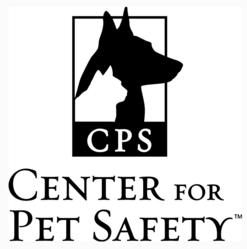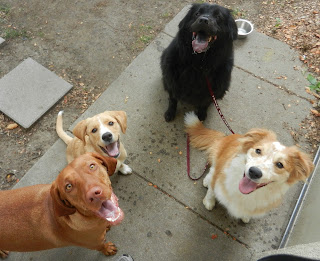Pet travel is at an all-time high with tens of millions of dogs traveling with their families every year. So what's the safest way to travel with your pets?
Front Seat Vs. Back Seat
Dogs want to move around and explore in the car unless they are restrained. Just like children, dogs should stay in the back seat so if an accident occurs, they are safe from the dashboard air bag impact. Air bags deploy at 200 miles per hour and the force could injure or kill them.
Carrier Vs. Seat Belt
The best way to transport your pet is in a well-ventilated carrier that has a secure door and latch (big enough for your dog to sit and lie down). The carrier should be facing forward so your dog will get plenty of air during the trip. Most importantly, secure the carrier to the car so if you stop short or have an accident, the carrier doesn't get thrown around the car.
Though not as effective as a carrier, pet seat belts are better than having a loose pet. There are many different brands and types of pet seat belts on the market. Each company has their own testing and standards so it's difficult to compare product to product. There are no specific safety standards on animal restraints currently and testing by the manufacturer is not a requirement.
Another benefit of a restrained pet in a car is a decrease in distractions for the driver. According to a 2010 American Automobile Association (AAA) survey, 2 out of 3 pet owners engage in distracting behaviors (playing with, feeding or petting their dog, or letting their dog sit in their lap) when pets are in the car. The National Highway Traffic Safety Administration (NHTSA) reports that approximately 20% of injury crashes involve distracted driving.
Are There Any Studies in Progress on Pet Seat Belts?
A pilot study was done by the Center for Pet Safety, a 501(c)(3) nonprofit organization, in 2011 where they tested four popular animal travel harnesses. Their testing was done according to the conditions of Federal Motor Vehicle Safety Standard 213 for child safety seats. A realistic crash was tested on "crash test dogs". No live animals were used in this study. The study indicated 100% failure rate. While travel harnesses may offer some protection in a crash, none of these products can guarantee safety for your pets during a crash. For more information on this study click here.
Another website that has done some research on the different types of pet restraints is Pet Auto Safety. Their research consisted of ranking four different car harness brands based on comfort, tangling, cost, and manufacturer testing.
With pet travel at an all time high, we hope studies continue on these products and safety standards are put into effect for the protection of our pets.
References:
http://www.prweb.com/releases/prweb2012petsafety/06pilotstudy/prweb9612738.htm
http://www.petinsurance.com
http://www.barkbuckleup.com/whybuckleup.asp
http://www.petautosafety.com/https://www.avma.org/public/PetCare/Pages/Hot-Cars-and-Loose-Pets.aspx



